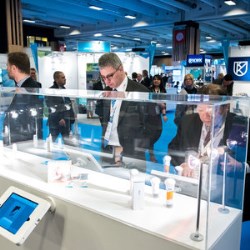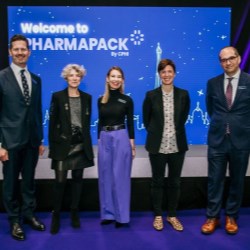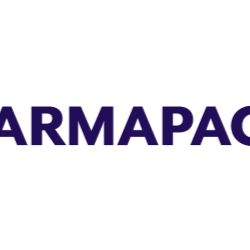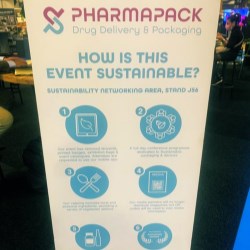Public
PharmaPack Europe Events
PharmaPack Europe Locations
PharmaPack Europe News
Pharmapack Europe Videos
If this is your company, CONTACT US to activate Packbase™ software to build your portal.


Ahead of her Learning Lab session at Pharmapack Europe 2022 exploring the potential for nasal delivery of vaccines – which has generated much excitement in the last year thanks to the recent approval of nasal flu vaccine and the late-stage work under way by Sanofi on the nasal delivery of Covid-19 vaccines. We speak with Gemma Budd, Director of Business Development at Nanopharm, an Aptar Pharma Company.
Pharmapack Europe is the largest drug delivery and packaging event in Europe and welcomes more than 300 exhibitors from 75 countries. The event features an International Meetings Programme (business matching), an International Meetings Programme, a full 2-day Conference, Learning Lab presentations, eponymous Awards, as well as areas for new innovations in the Start-up Hub, Innovation Gallery and Tours. In total, the event will play host to some 5000 attendees and more than 50 dedicated content sessions.
Q) What are the main drivers behind the increased interest in nasal vaccine delivery and how does it compare to conventional parenteral vaccine administration?
For respiratory viruses like Covid-19, nasal vaccines are being looked at because this is the site of entry of the pathogens, so rather than relying on systemic action of the vaccine through parenteral injections, we can aim to achieve direct nasal mucosal immunity so that as soon as the virus enters the nose our body can initiate the immune response and prevent migration to the lungs. There is an approved intranasal flu vaccine (AZ’s Flumist™ Quadrivalent), so the concept has been proven, but it is quicker and easier to formulate a vaccine by injection so some companies start there and then look to reformulate once they have confidence in the efficacy of their product. This is also the rationale behind developing intranasal prophylactics and therapeutics for these viruses, as well as for the treatment of CNS indications – targeting the direct nose to brain delivery pathway.
Q) What are some of the physiological barriers presented by nasal delivery of vaccines and/or the other main challenges associated with nasal vaccines?
The nose is a dynamic environment and is designed to stop foreign materials from remaining in the body. For example, it contains enzymes and immune cells that would destroy the vaccines, as they are nucleic acid based, before they have the chance to enter the body – however, encapsulation or conjugation to nanoparticles can help with this to some extent.
The other challenge is that the majority of the nasal cavity contains motile cilia, which continuously clears materials out of the nose to be swallowed and eventually excreted.
If we have vaccine formulations that can overcome this then it must also be to penetrate through the mucus barrier that shields the mucosal cells, so that that it can trigger the immune response. This is achieved through the addition of specific excipients to the formulation that can deliver these sorts of properties – but obviously the more complicated you make the formulation, the more difficult it is to control.
The other common complication is that each region of the nasal cavity has a different make up and, for nasal vaccines, you want to target the NALT region which is at the
back of the nose. This means you will need a device that can target this region, while also minimising the risk of swallowing the vaccine.
The other factors to consider are of course that the nasal cavity is a relatively compact region and you can’t deliver the same volume of formulation into the nose as you would via an injection. Large loads would simply drip out or get swallowed. This means you have to find a way to increase the concentration of the formulation but crucially without affecting its stability.
Q) Are traditional nasal devices being used or should developers be looking for novel technologies that are better suited for this purpose?
Aptar has legacy nasal delivery systems that have been reviewed and approved by the regulatory authorities for use for other locally acting products such as those for allergic rhinitis, but we have also developed new novel delivery devices. These novel devices can either be used either as transfer devices for existing vaccine vials that were initially designed for parenteral delivery – which makes it a bit easier to maintain some of the existing packaging and storage conditions that have already been established. Alternatively, we have also developed novel prefilled nasal delivery solutions that are better suited to vaccine formulations in terms of dosing volume and regional deposition. In fact, we will be showcasing these at Pharmapack (stand number)
Q) Do you see any variance in markets (Europe, the USA or China), do you expect one of these to lead the industry forward in terms of adoption/technology?
In China their healthcare system is based on public and private institutions, but there is a strong government commitment to market reform through the Healthy China 2030 plan. Traditional Chinese medicine is a large part of the health market, but technology and Artificial Intelligence is likely going to be part of future of healthcare.
Also, considering the issues with cold chain storage and logistics for vaccines in developing countries, we are working with a lot of companies who are specifically developing vaccines and prophylactics for these developing nations where they don’t have the infrastructure to support -80C storage, and intranasal delivery has the potential to mitigate this, because there is more flexibility over the formulation composition which can help improve shelf life. However, for CNS diseases, the target is still often the USA because of the size of the market both from a commercial perspective, but also patient population, and the willingness for the FDA to evaluate novel approaches (albeit through a very rigorous regulatory process).
Q) How do the properties of biologics contribute or hinder their ability to deliver them intranasally?
There are pros and cons. Biologic molecules struggle to penetrate through cell walls, which helps from a retention and local activity point of view, but at the same time they are less stable and more prone to enzymatic degradation, and because they are hydrophilic, they also struggle to penetrate through the mucus barrier to actually
reach the cells. This means they need help from other formulation components that carry the biologics to the site of action and protect it along the way – for example, via the use of nanoparticles which are also used in parenteral vaccines, as well as more specialised formulation enhancers that are not suitable or needed for injections but have been evaluated for intranasal applications. The good thing about biologics being hydrophilic though, is that they like being in an aqueous environment, which helps from a formulation point of view. However, intranasal formulations do need to be more highly concentrated than parenteral vaccines – as I mentioned earlier – and biologics are complex structures prone to agglomeration or fragmentation., which would inhibit their activity. So it’s a challenge to find the balance. If we are talking about other applications such as CNS disease, there are benefits for small sized biologics – such as peptides and nucleic acids in nanoparticle complexes – in that they tend to be able to permeate through tight junctions between cells. This enables them to access the neuronal pathways to the brain, bypassing the blood brain barrier.
Q) Does this also imply nasal delivery might be suitable for some other future uses of mRNA technology?
Definitely, gene therapy is a growing field because it allows us to directly mimic the body’s natural physiology or replace deficient genetic activity, which is better from a toxicology and immune response perspective. In the inhaled and nasal drug delivery space, these mRNA targets in the majority of cases are for respiratory diseases – not just infectious disease, but also genetic conditions and degenerative diseases such as Alzheimers. The real challenge is keeping the mRNA or nucleic acid molecules stable until they get to their site of action, but by being able to target the affected area of the body this has benefits including fewer off-target effects and the potential for delivery of lower doses, which is better for the patient’s body, but also more cost effective in terms of production. Consequently, less of the expensive drug is used, which means there should ultimately be a lower cost to the health system and patient.

















